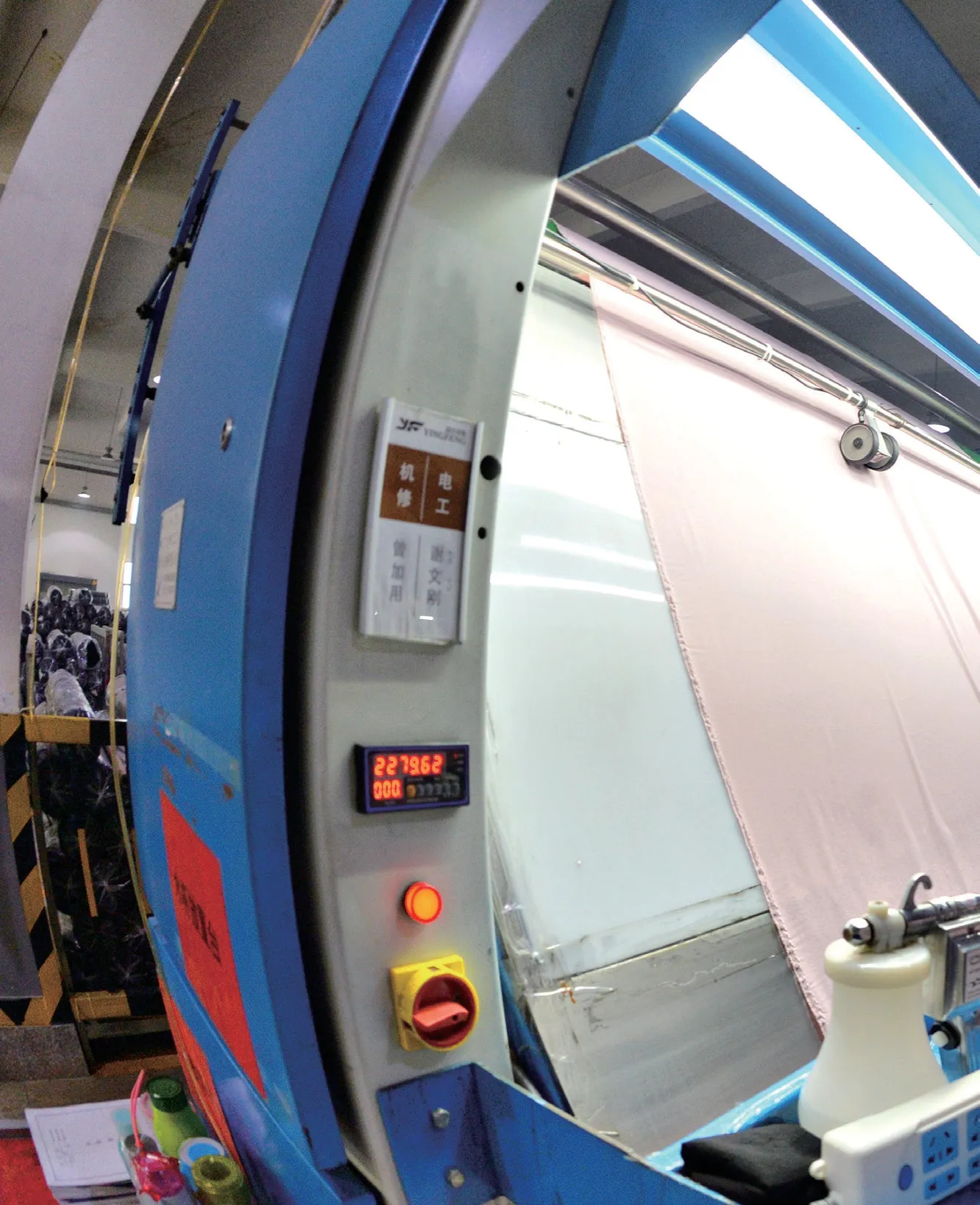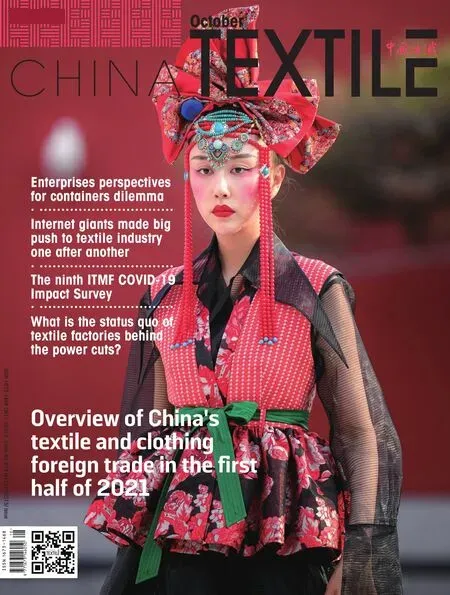Operation status of textile machinery industry in first half of 2021
Edited by Zhao Xinhua
In the first half of 2021, thanks to the stable situation of pandemic prevention and control in China and the continuous release of macro policy effects, the national economy recovered steadily, the prosperity of the textile industry recovered, and the industrial cycle remained unimpeded. Thee production and operation of China’s textile machinery industry has maintained steady development, the main economic indicators of the industry have maintained a steady recovery trend, export has maintained growth, and foreign trade has continued the surplus trend since 2019.

Operational quality and efficiency
Industry revenue is steadily improving. According to the National Bureau of Statistics, from January to June 2021, the operating revenue of 664 textile machinery enterprises above designated size increased 33.22 percent year-on-year, down 5.70 percent from the same period in 2019. Total assets increased 10.73 percent year-on-year. Industry earnings continue to improve. From January to June 2021, the total profits of textile machine enterprises above designated size increased by 50.95 percent yearon-year and 0.67 percent compared with the same period in 2019. Operating margin was 7.44 percent, up 0.84 percentage points year-on-year. Thee loss of loss-making enterprises decreased by 23.15 percent year-on-year; the percentage of loss-making enterprises was 21.84 percent, down 11.34 percentage points year-on-year. Thee total cost of textile machinery enterprises above designated size increased by 31.37 percent year-on-year, which was 1.85 percentage points lower than that of operating revenue. Thee industry’s debt to asset ratio increased slightly. From January to June 2021, the total assets of textile machinery enterprises above designated size increased by 10.73 percent year-onyear. Thee debt to asset ratio was 59.83 percent, up 1.92 percentage points year-on-year, higher than the debt to asset ratio of 56.5 percent of industrial enterprises above designated size.
I nvestigation of key enterprises
Thee China Textile Machinery Association conducted a business performance survey of 368 textile machinery enterprises in the first half of 2021. From the summary of the results, compared with the same period last year, the business has significantly improved. 72 percent of enterprises’ operating revenue increased by different degrees compared with the same period last year, 73 percent of enterprises’ orders exceeded the level of the same period last year; 62 percent of enterprises capacity utilization was above 80 percent. At present, the main problem facing enterprises is the difficulty of shortage of labor and the pressure of rising cost. 54.65 percent of the enterprises thought that the orders in the second half of the year would increase compared with the first half of the year, and their optimism about the overall situation of the textile machinery industry in the second half of the year fell slightly, 45 percent of the surveyed enterprises were optimistic about the second half of the year.

Import and export
According to customs statistics, from January to June 2021, China’s textile machinery import and export totaled USD 4.073 billion, with a year-on-year growth of 24.08 percent. Of this, textile machinery imports reached USD 1.74 billion, up 24.88 percent year-on-year; exports reached USD 2.333 billion, up 23.49 percent year-on-year.
From January to June 2021, textile machinery was imported from 62 countries and regions, with a total import of USD 1.74 billion, up 24.88 percent year-on-year and a slight increase compared with the same period in 2019. In terms of import categories, chemical fiber machinery imports ranked first, with a total import of USD 507 million, down 6.74 percent year-on-year, accounting for 29.12 percent of the total import. Seven categories of products except chemical fiber machinery have a different range of growth.
From January to June in 2021, China exported textile machinery to 177 countries and regions totaling USD 2.333 billion, up 23.49 percent yearon-year. Thee export of knitting machinery was USD 580 million, up 73.37 percent year-on-year, accounting for 24.87 percent, ranking first, followed by dyeing and finishing machinery, auxiliary devices and spare parts, nonwovens machinery, spinning machinery, weaving machinery and chemical fiber machinery, five up and two down in seven categories.
Industry outlook
In the first half of 2021, China’s coordinated pandemic prevention and control efforts achieved remarkable results, with sustained and steady recovery of economic and social development. The market demand of China’s textile machinery industry has gradually picked up, the overall business status of enterprises has been improved, and the industry runs steadily.
In the second half of the year, China’s macro economy is expected to accelerate from sustained recovery to normalization, as the internal driving force of the Chinese economy is further strengthened, the layout of medium- and long-term development strategies and projects are implemented, and the global economic situation gradually becomes clear. The industrial policy implementation in the future and accelerating the construction of new dual circulation development pattern, the layout of the science and technology support and the layout of supply chain and industry chain, domestic circulation unblocked, the start of the strategic of boosting domestic demand and other measures, are beneficial to optimize the environment of business financing, stable consumption and investment demand, support industry running smoothly.
In the meantime, the development of the textile machinery industry is currently faced with more unstable factors, and the global outbreak continues, international political and economic situation is still complicated, since the beginning of the rising prices of raw materials, logistics costs soaring, global supply chain bottleneck still exists, these all bring larger production and operation pressure, stable industry development still faces many tests.
In response to external environmental changes, the textile industry will continue to focus on intelligent manufacturing and industrial upgrading, promote independent innovation, meet market demand, actively explore international and domestic markets, properly respond to improve risk resistance and development resilience, and promote high-quality development of the industry.
- China Textile的其它文章
- Overview of China's textile and clothing foreign trade in the first half of 2021
- Pandemic prevention materials exported fell rapidly
- Ministry of Commerce: China's foreign trade may encounter huge pressure next year
- Enterprises perspectives for containers dilemma
- Internet giants made big push to textile industry one after another
- Changes in China’s sportswear industry

